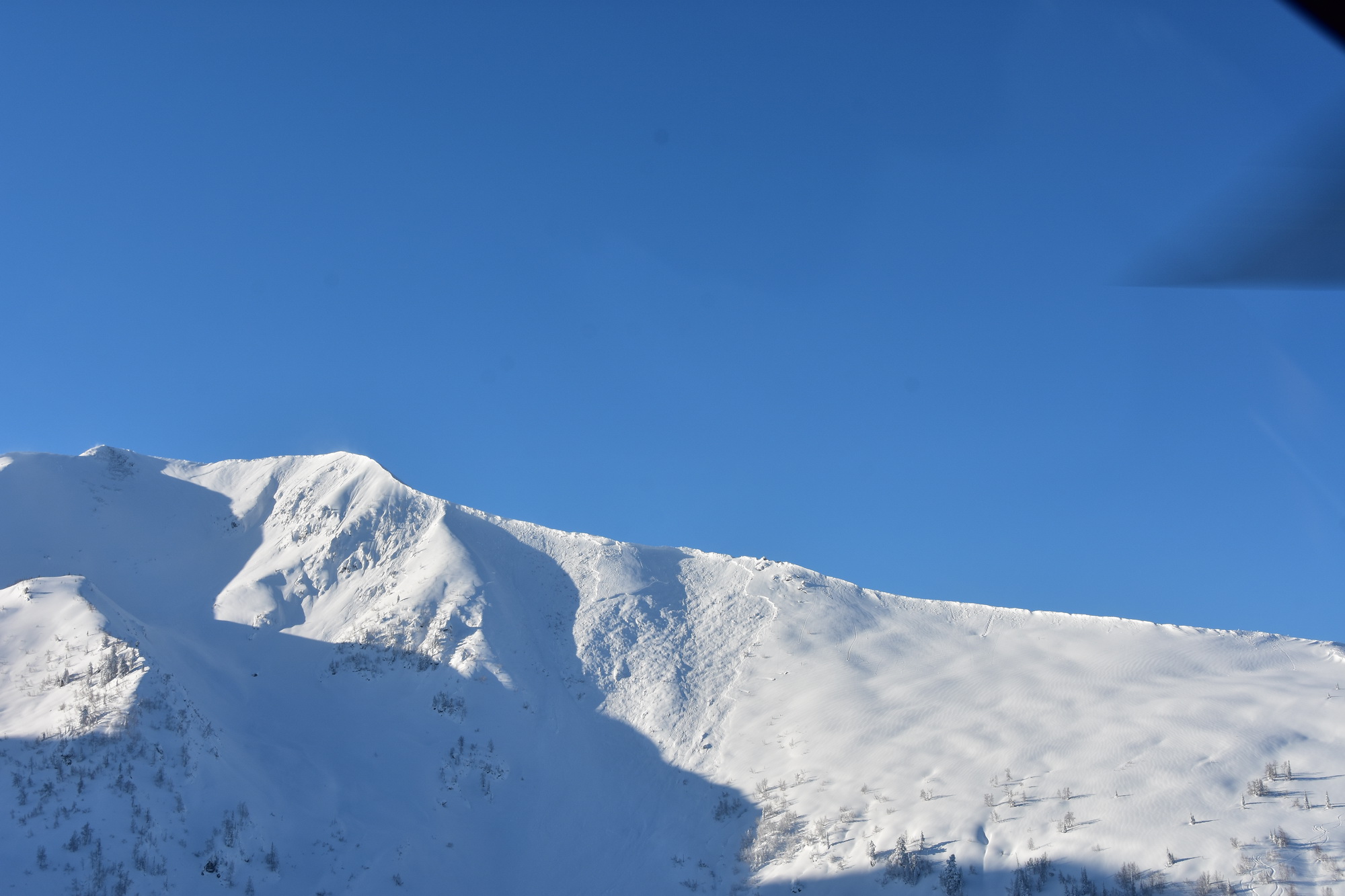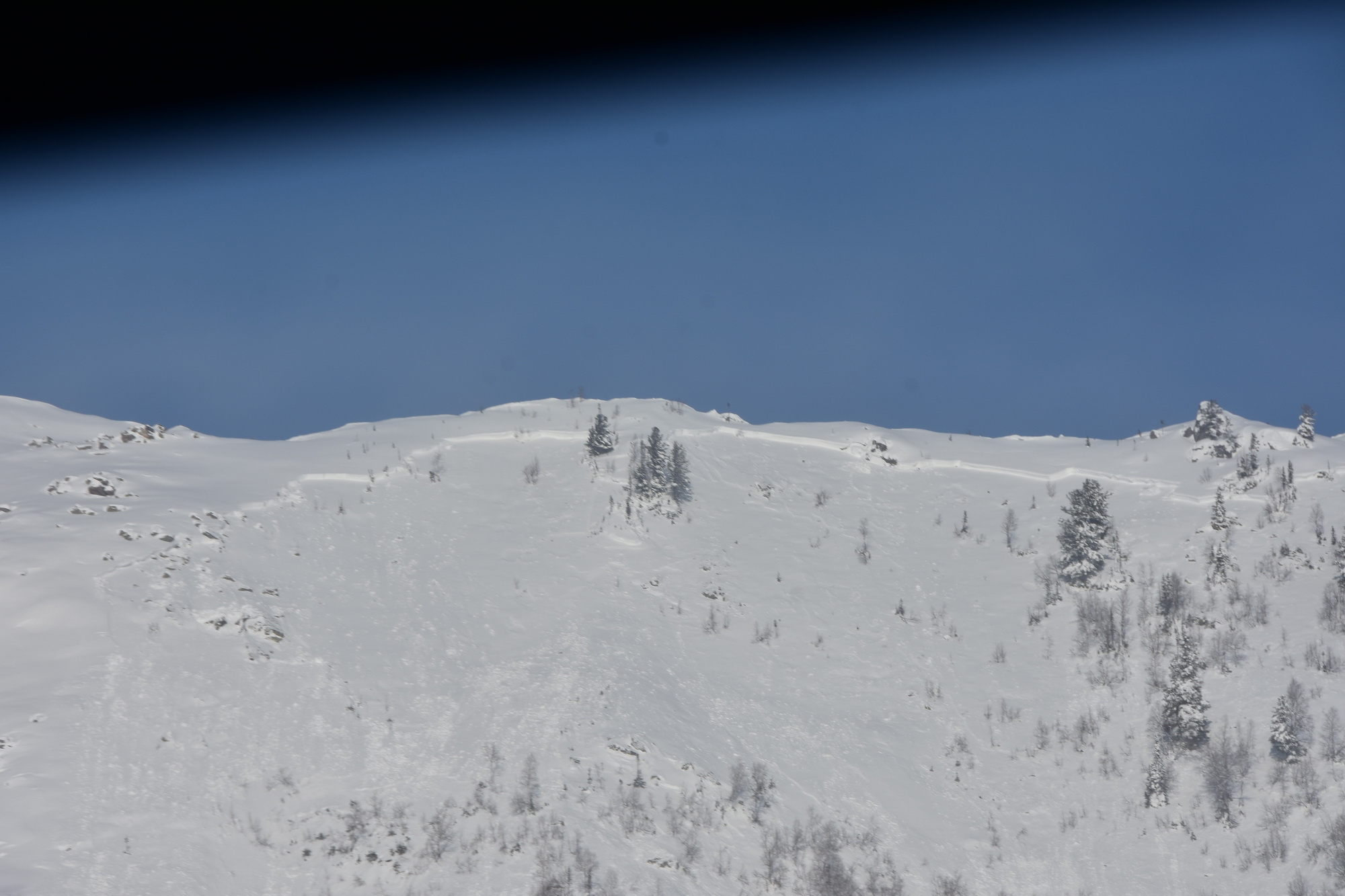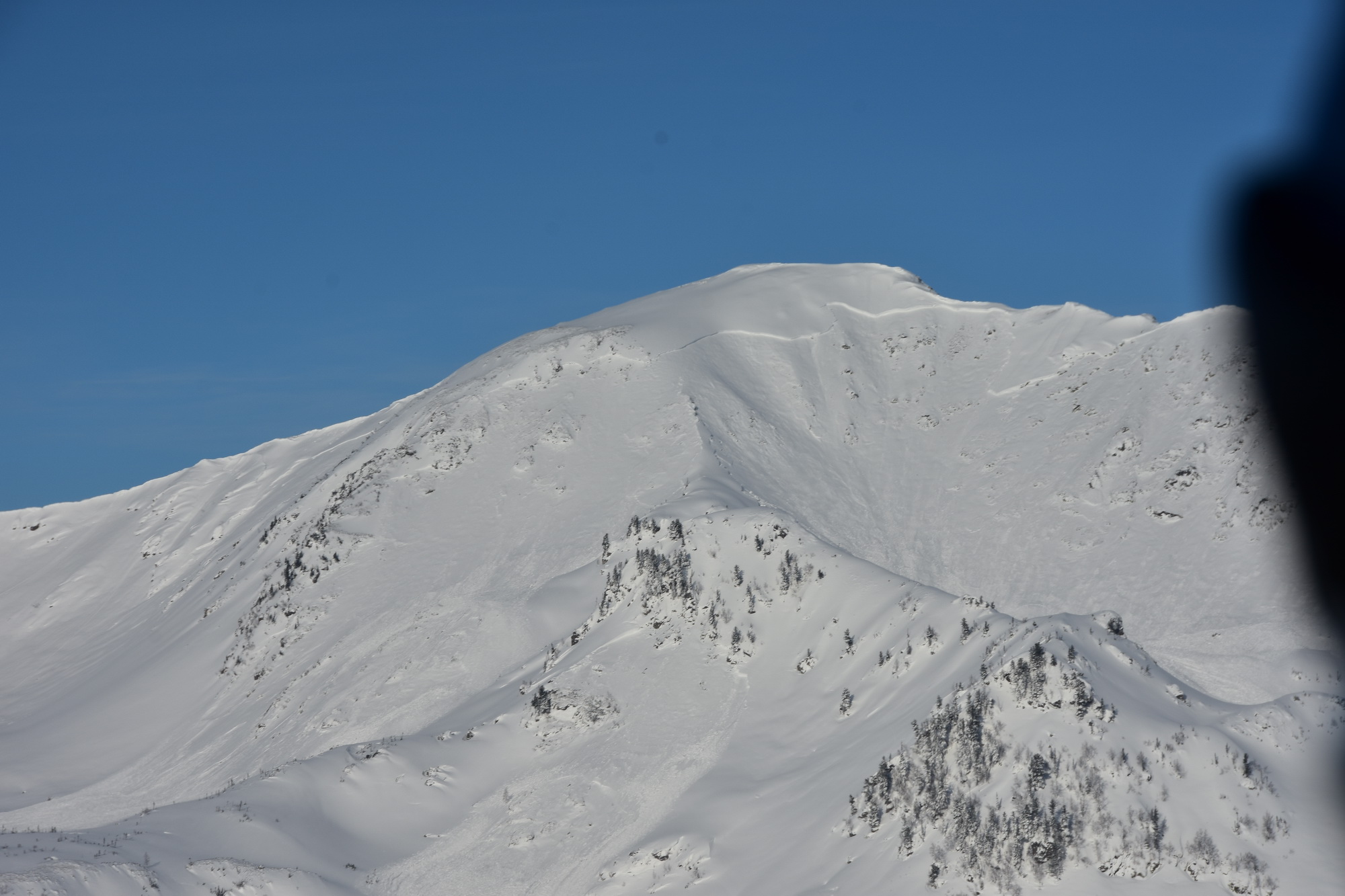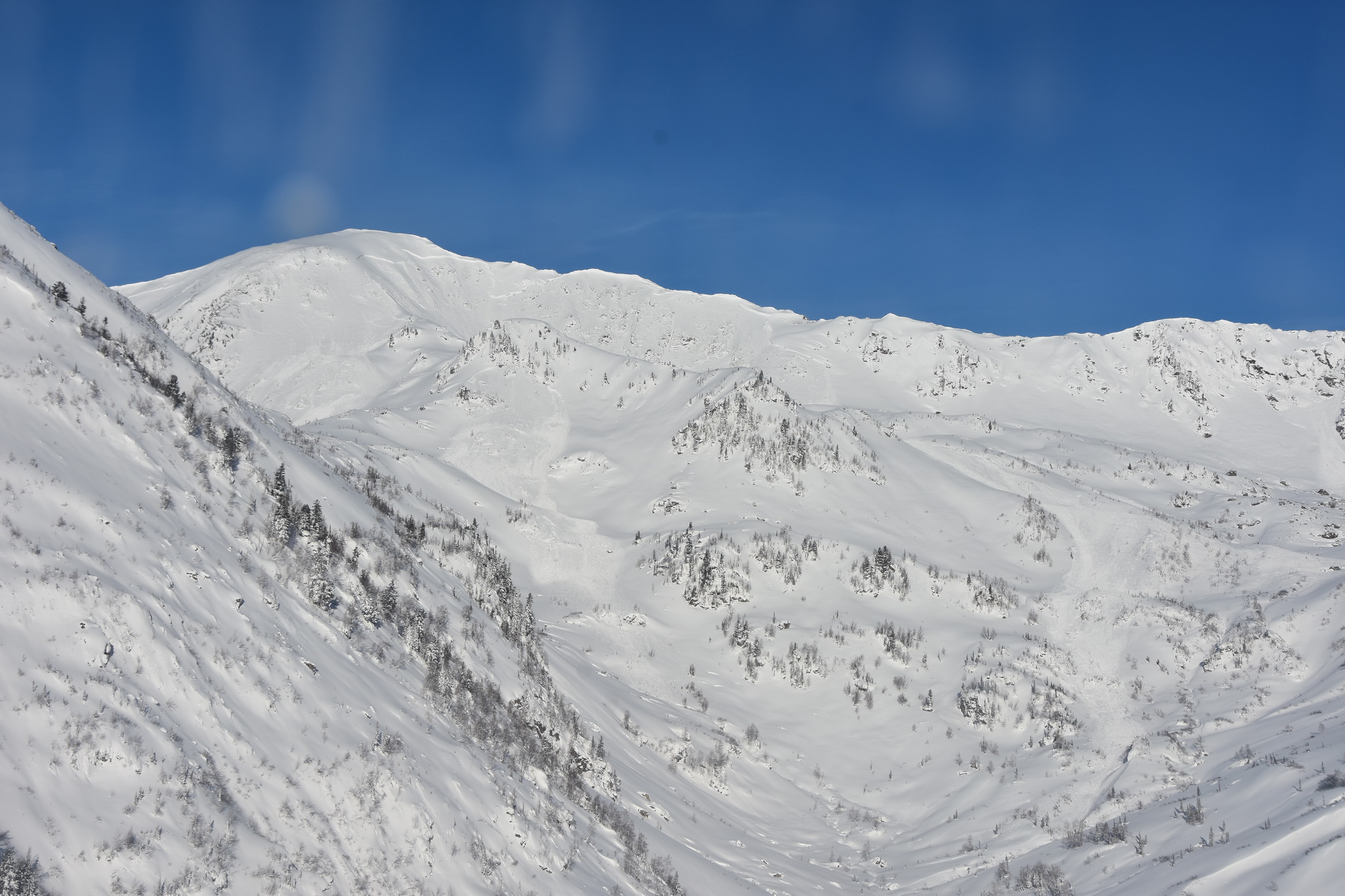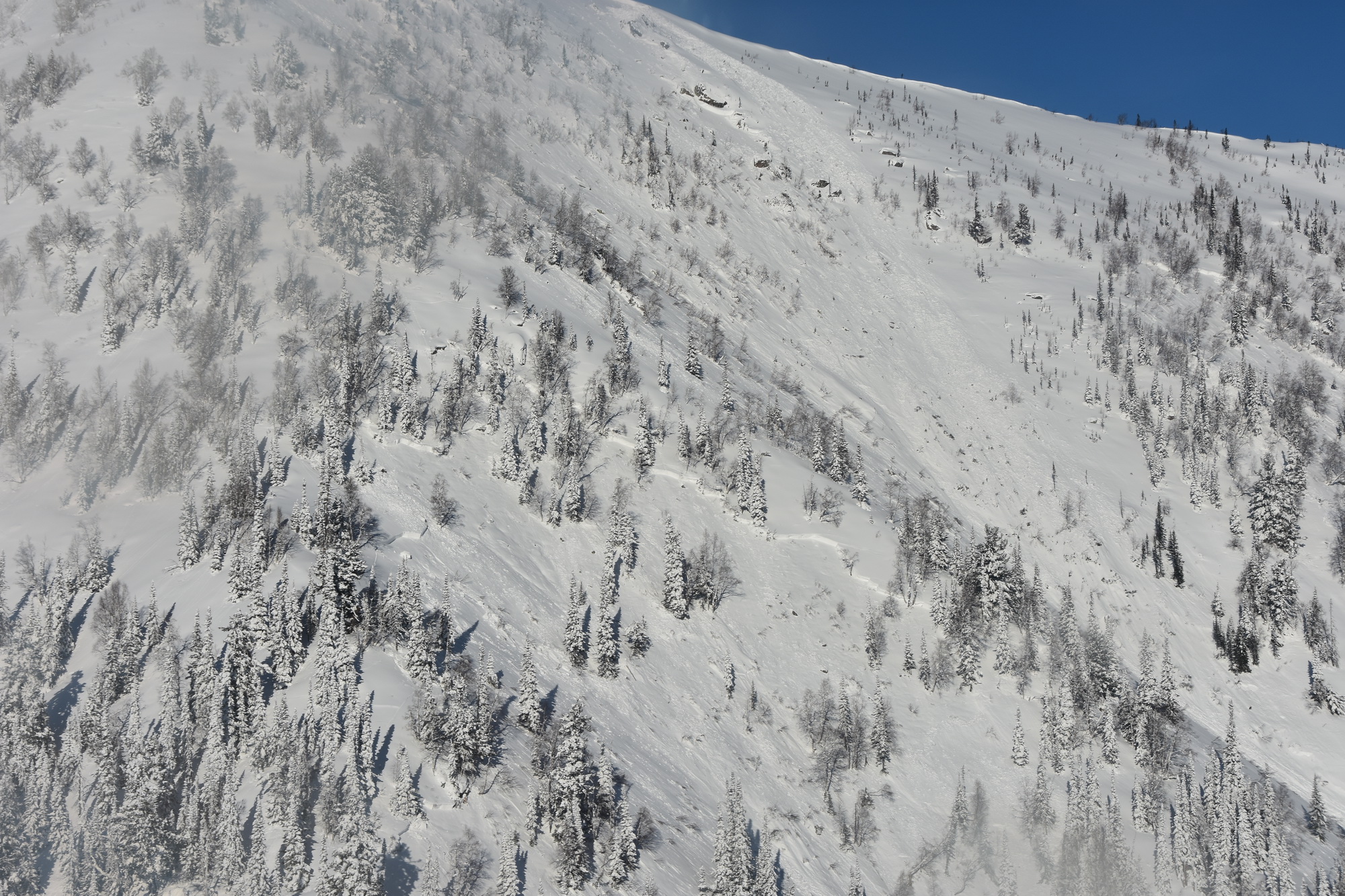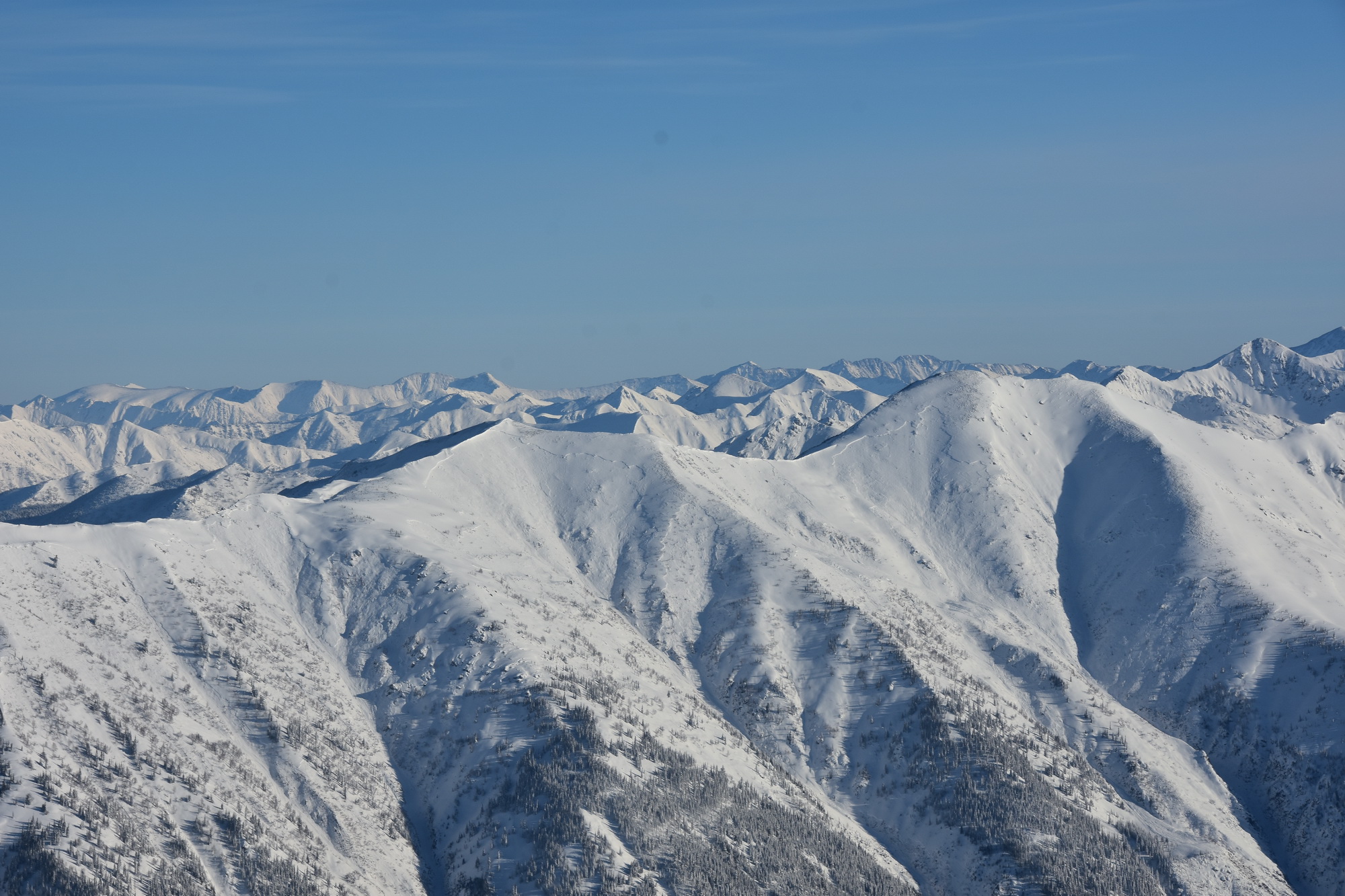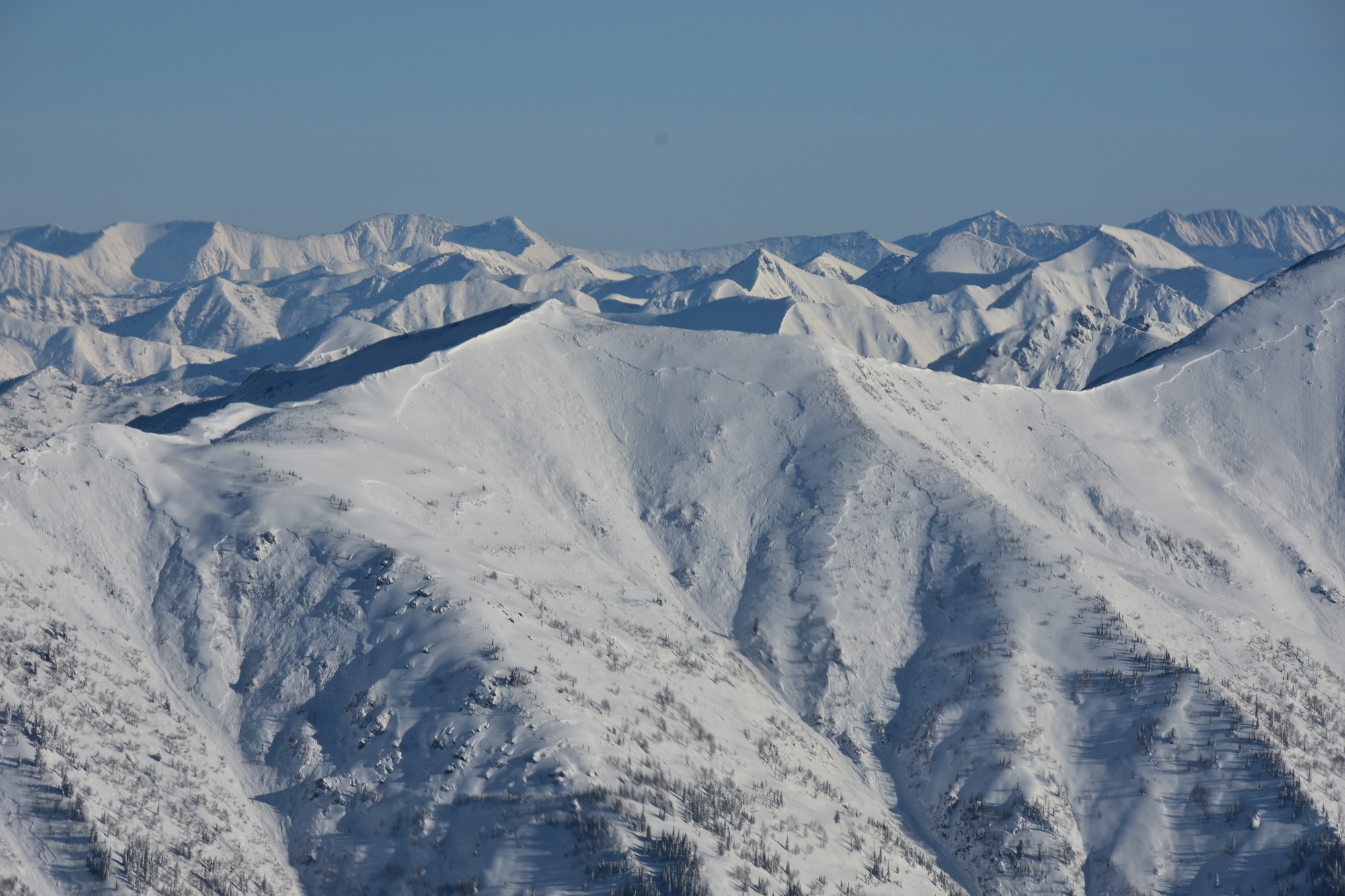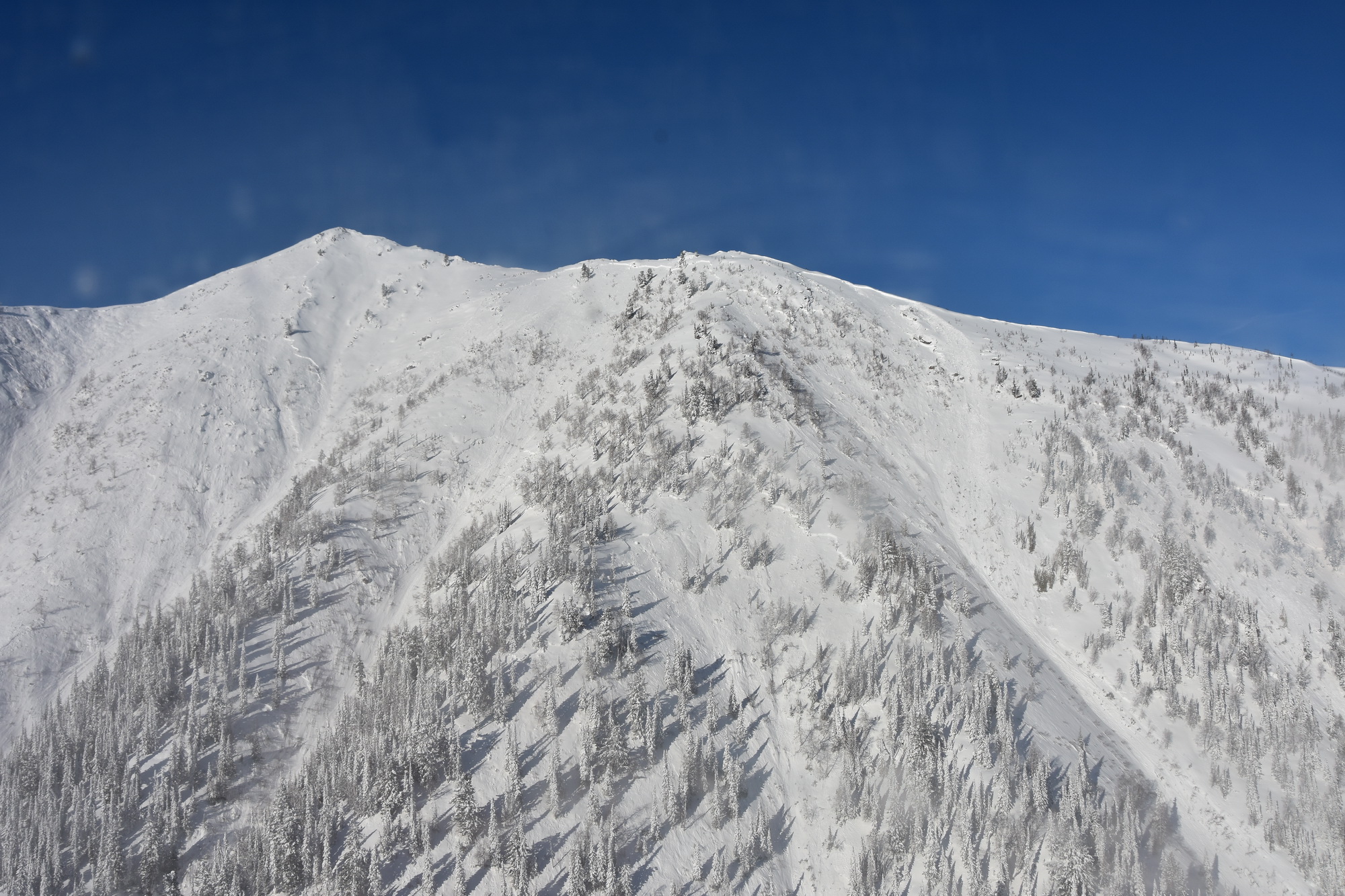Sergey Fursov (RMGA mountain guide) and I have been heliskiing in the Khamar-Daban range since 25 Nov. During our exploratory and training flights, we found a widespread melt-freeze crust (MFcr), formed in November, located 30-70 cm from the surface, referred to as November MFcr. This crust showed facets above and below, with the facet layer below being up to 20cm thick. Stability tests showed non-planar breaks and resistant planar results.
In the Valunnaya mt. area we could observe remote triggering of avalanches to size 2. A storm system passed through the region between 1 and 7 December, bringing a total of 50-60 cm of new snow and gusty winds to 25 m/s from the north. Temperatures dropped down to -30°.
On 7 and 8 December, in the areas of Taltsinsky Peak (highest point of the of the Valunnaya area), and the Osinovka river valley, we could see several natural avalanches size 1-3, which released during the 1-7 Dec. snowfalls or shortly after. Aspects were mainly south, as well as south-west and south-east, with slope angles of 30 - 38 degrees. Fracture lines were 20 – 50 cm high. Avalanche debris was observed in the alpine, some reached into forested areas. In the attached photos, the dimensions of avalanches and the characteristics of the topography are well visible.
Our avalanche rating based on observations, tests, and discussions were for ALP/TL: 3/3. This rating is mainly due to the activity on the November MFcr – facet combination. This layer is widespread, and can result in avalanches to size 3, triggered both naturally or by skiers. The facet layer is a persistent weak layer and will likely persist for a few months or until the end of the winter. Particular care and conservative route choices are recommended on south, south-east and south-west aspects.

